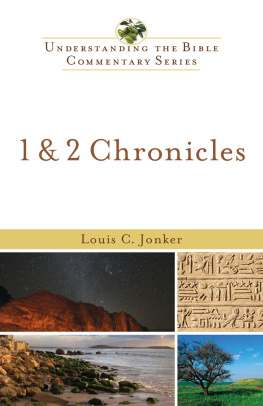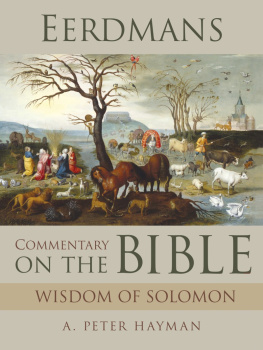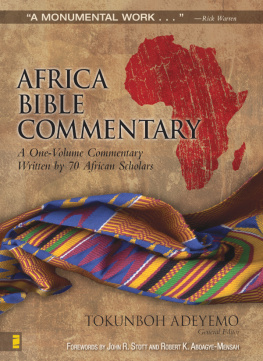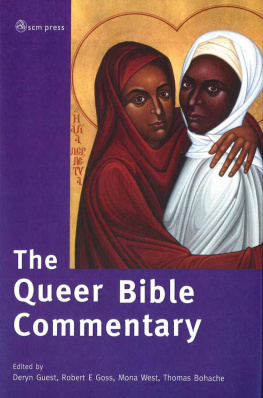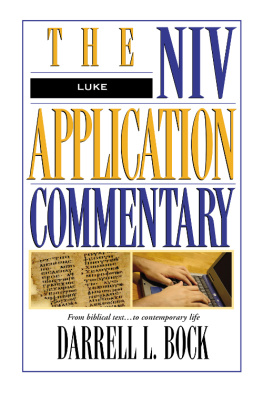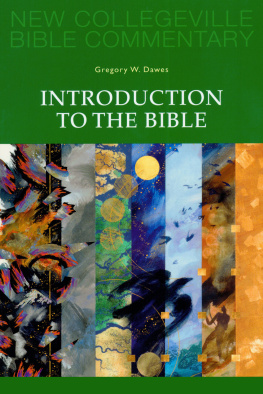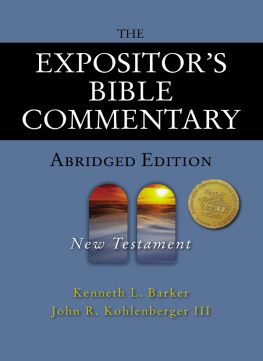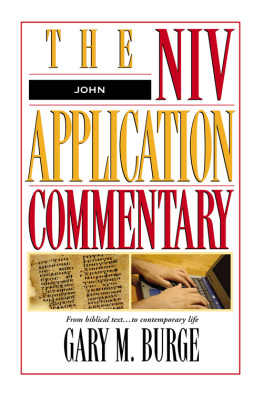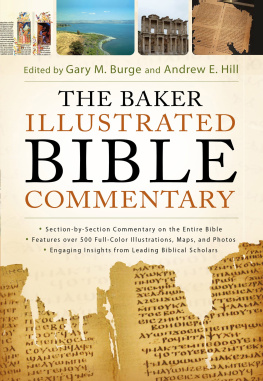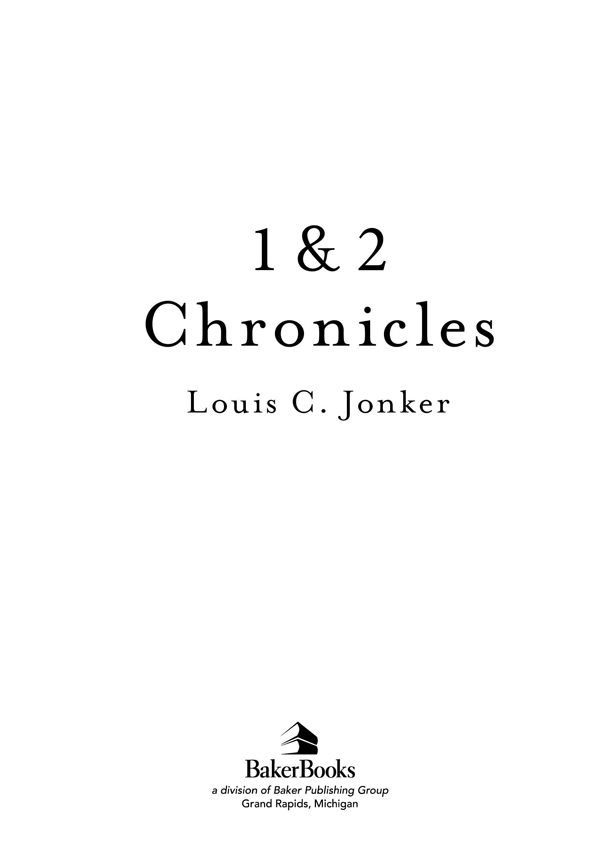W. Ward Gasque
Robert L. Hubbard Jr.
Robert K. Johnston
2013 by Louis C. Jonker
P.O. Box 6287, Grand Rapids, MI 49516-6287
All rights reserved. No part of this publication may be reproduced, stored in a retrieval system, or transmitted in any form or by any meansfor example, electronic, photocopy, recordingwithout the prior written permission of the publisher. The only exception is brief quotations in printed reviews.
Library of Congress Cataloging-in-Publication Data is on file at the Library of Congress, Washington, DC.
Unless otherwise indicated, Scripture quotations are from the Holy Bible, New International Version. NIV. Copyright 1973, 1978, 1984 by Biblica, Inc. Used by permission of Zondervan. All rights reserved worldwide. www.zondervan.com
Scripture quotations labeled NRSV are from the New Revised Standard Version of the Bible, copyright 1989, by the Division of Christian Education of the National Council of the Churches of Christ in the United States of America. Used by permission. All rights reserved.
Contents
Cover
Series Page
Title Page
Copyright Page
Foreword
Preface
Abbreviations
Introduction
1 Lets Start at the Beginning (1 Chron. 1:19:44)
1.1 From Adam to Abraham (1 Chron. 1:127)
1.2 Abrahams Descendants (1 Chron. 1:282:2)
1.3 Focus on Judah and His Famous Descendants (1 Chron. 2:34:23)
1.4 Simeons Descendants (1 Chron. 4:2443)
1.5 Descendants of Reuben, Gad, and the Half-Tribe of Manasseh (1 Chron. 5:126)
1.6 Focus on Levi (1 Chron. 6:181)
1.7 Descendants of Issachar, Benjamin, Naphtali, Manasseh, Ephraim, and Asher (1 Chron. 7:140)
1.8 Focus on Benjamin (1 Chron. 8:19:1a)
1.9 Jerusalems Inhabitants and Cultic Officials (1 Chron. 9:1b34)
1.10 Sauls Descendants (1 Chron. 9:3544)
Summary of 1
2 David, the First King (1 Chron. 10:129:30)
2.1 Sauls Death and the Start of Davids Reign (1 Chron. 10:114)
2.2 All-Israel Anoints David at Hebron (1 Chron. 11:112:40)
2.3 David Brings the Ark to Jerusalem (1 Chron. 13:116:43)
2.4 A House for Yahweh and for David (1 Chron. 17:127)
2.5 Davids Wars (1 Chron. 18:120:8)
2.6 A Place for the Temple (1 Chron. 21:122:1)
2.7 David Orders Solomon to Build the Temple (1 Chron. 22:219)
2.8 David Organizes the Cultic and Secular Officials (1 Chron. 23:127:34)
2.9 Final Arrangements for Building the Temple and Transfer of the Kingdom to Solomon (1 Chron. 28:129:25)
2.10 Conclusion to Davids Reign (1 Chron. 29:2630)
Summary of 2
3 Solomon, the Man of Peace and Rest (2 Chron. 1:19:31)
3.1 God Appears to Solomon at Gibeon (2 Chron. 1:117)
3.2 Solomon Prepares to Build the Temple (2 Chron. 2:118)
3.3 Solomon Builds the Temple (2 Chron. 3:15:1)
3.4 Solomon Dedicates the Temple (2 Chron. 5:27:22)
3.5 Solomons Other Projects (2 Chron. 8:118)
3.6 Solomons International Fame (2 Chron. 9:128)
3.7 Solomons Death (2 Chron. 9:2931)
Summary of 3
4 The Kings of Judah (2 Chron. 10:136:23)
4.1 Rehoboam (2 Chron. 10:112:16)
4.2 Abijah (2 Chron. 13:114:1a)
4.3 Asa (2 Chron. 14:1b16:14)
4.4 Jehoshaphat (2 Chron. 17:121:1)
4.5 Jehoram (2 Chron. 21:220)
4.6 Ahaziah (2 Chron. 22:19)
4.7 Athaliah and Joash (2 Chron. 22:1024:27)
4.8 Amaziah (2 Chron. 25:128)
4.9 Uzziah (2 Chron. 26:123)
4.10 Jotham (2 Chron. 27:19)
4.11 Ahaz (2 Chron. 28:127)
4.12 Hezekiah (2 Chron. 29:132:33)
4.13 Manasseh (2 Chron. 33:120)
4.14 Amon (2 Chron. 33:2125)
4.15 Josiah (2 Chron. 34:136:1)
4.16 Jehoahaz, Jehoiakim, Jehoiachin, Zedekiah (2 Chron. 36:214)
4.17 The Fall of Jerusalem (2 Chron. 36:1521)
4.18 Liberation under Emperor Cyrus (2 Chron. 36:2223)
Summary of 4
For Further Reading
Subject Index
Scripture Index
Back Cover
Foreword
As an ancient document, the Old Testament often seems something quite foreign to modern men and women. Opening its pages may feel, to the modern reader, like traversing a kind of literary time warp into a whole other world. In that world sisters and brothers marry, long hair mysteriously makes men superhuman, and temple altars daily smell of savory burning flesh and sweet incense. There, desert bushes burn but leave no ashes, water gushes from rocks, and cities fall because people march around them. A different world, indeed!
Even God, the Old Testaments main character, seems a stranger compared to his more familiar New Testament counterpart. Sometimes the divine is portrayed as a loving father and faithful friend, someone who rescues people from their greatest dangers or generously rewards them for heroic deeds. At other times, however, God resembles more a cruel despot, one furious at human failures, raving against enemies, and bloodthirsty for revenge. Thus, skittish about the Old Testaments diverse portrayal of God, some readers carefully select which portions of the text to study, or they avoid the Old Testament altogether.
The purpose of this commentary series is to help readers navigate this strange and sometimes forbidding literary and spiritual terrain. Its goal is to break down the barriers between the ancient and modern worlds so that the power and meaning of these biblical texts become transparent to contemporary readers. How is this to be done? And what sets this series apart from others currently on the market?
This commentary series will bypass several popular approaches to biblical interpretation. It will not follow a precritical approach that interprets the text without reference to recent scholarly conversations. Such a commentary contents itself with offering little more than a paraphrase of the text with occasional supplements from archeology, word studies, and classical theology. It mistakenly believes that there have been few insights into the Bible since Calvin or Luther. Nor will this series pursue an anticritical approach whose preoccupation is to defend the Bible against its detractors, especially scholarly ones. Such a commentary has little space left to move beyond showing why the Bibles critics are wrong to explaining what the biblical text means. The result is a paucity of vibrant biblical theology. Again, this series finds inadequate a critical approach that seeks to understand the text apart from belief in the meaning it conveys. Though modern readers have been taught to be discerning, they do not want to live in the desert of criticism either.
Instead, as its editors, we have sought to align this series with what has been labeled believing criticism . This approach marries probing, reflective interpretation of the text to loyal biblical devotion and warm Christian affection. Our contributors tackle the task of interpretation using the full range of critical methodologies and practices. Yet they do so as people of faith who hold the text in the highest regard. The commentators in this series use criticism to bring the message of the biblical texts vividly to life so the minds of modern readers may be illumined and their faith deepened.
The authors in this series combine a firm commitment to modern scholarship with a similar commitment to the Bibles full authority for Christians. They bring to the task the highest technical skills, warm theological commitment, and rich insight from their various communities. In so doing, they hope to enrich the life of the academy as well as the life of the church.

